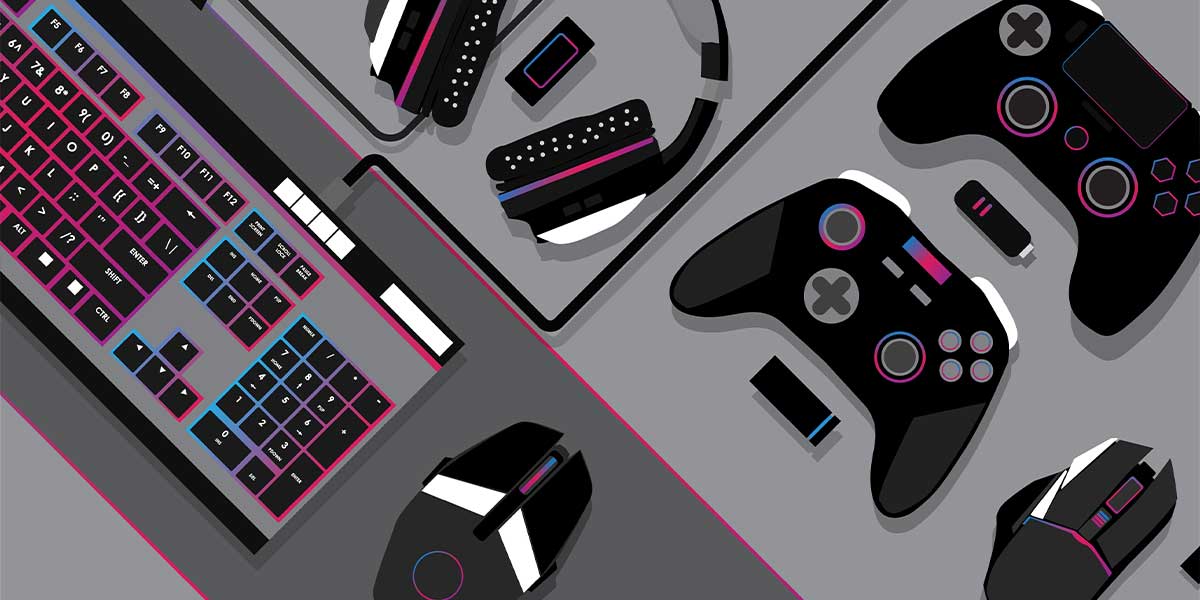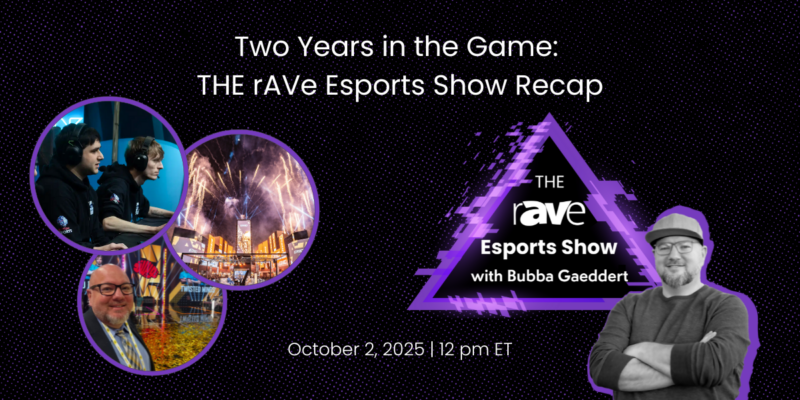Authentic Esports: Gaming vs. Esports (A Tale of Two Realms)

A good author knows that before reaching the story’s climax — or final boss — you have to build the world, introduce the characters, set the stakes, and never skip the setup. Likewise, in this column, I’ll avoid rushing straight into listing AV gear as if it’s patch notes. I want to capture the heart of the story. What is at the heart of it? Authentic esports.
This isn’t a loot drop of gear recommendations. It’s a campaign guide — a narrative. It’s a quest log. Every quest needs context.
We’ll continue to revisit this particular chapter in the story because, as I assess the AV landscape, it’s obvious that some vendors and integrators are taking on the role of potion merchants outside the village. These merchants offer glowing bottles and enchanted accessories that have nothing to do with the quest before us.
What is the issue at hand? It’s one that refuses to log out: gaming vs. esports.
Yes, I know — we’ve all heard this one before. Maybe you’re rolling your eyes, thinking, “Didn’t we cover this in the tutorial level?” But if the industry continues confusing a Mario Kart student union tournament with a structured esports program, we will keep pressing this dialogue. I know. It’s like a cutscene you want to skip.
What if I told you that the cutscene is the highlight? It needs to go viral, so let’s respawn this conversation with clarity.
Gaming: The Casual Kingdom
Gaming is the root, the origin story, the place where most of us started — whether blowing into NES cartridges, LAN parties in the basement, or late-night quests in Skyrim or “Metal Gear Solid.” It’s joyful, chaotic, deeply personal and varied.
Casual gaming is about entertainment, discovery and social connection. There’s no win condition beyond fun. That’s precisely the point.
From an AV design standpoint, gaming spaces lean into comfort and vibe. Think LED strip lights, plush chairs, a sound bar with just enough bass to feel the footsteps in Warzone, and a couch in the corner.
These setups say, “Relax. Play. Snack. Repeat.”
Not: “You’ve got scrims at four and a bracket match at six — get your focus face on.”
And that’s okay. Casual gaming is vital. It’s where passion is born. But it’s also not esports.
Esports: Competitive Mode Activated
Esports is where the stakes get real. This is the structured, competitive world of tournaments, leagues and Twitch-worthy plays that get clipped and memed into history.
In esports, precision is everything. Decisions are made in milliseconds — equipment matters. Mental focus is as crucial as mechanical skill. There’s a scoreboard, a bracket, a season, and sometimes even prize pools bigger than your alma mater’s endowment.
AV technology here isn’t about fun — it’s about performance.
- You need high-refresh-rate displays to eliminate input lag.
- You need low-latency audio and video switching.
- You need shoutcaster booths and control rooms that rival broadcast TV.
- You need PTZ cameras that capture that game-winning flick shot, not just a shaky phone recording from the crowd.
Esports facilities are arenas, not arcades. They’re training grounds, not lounges. And your gear choices? They’re not cosmetic. They’re competitive.
Vendors: Stop Selling Magic Beans
Let’s talk directly to the AV industry for a second.
Too many vendors are out here like traveling salesmen — offering “esports bundles” that include a gaming chair, a condenser mic, and a webcam with a ring light like it’s the Holy Trinity of competition.
Spoiler alert: It’s not.
If your esports solution looks like it was pulled from a streamer starter pack on Amazon, you’ve missed the mission. Esports isn’t about flashy RGB and branded mousepads. It’s about building ecosystems that support team-based performance, production-quality storytelling and educational impact.
Before you roll out your next “esports in a box” pitch, ask yourself:
- Can this setup survive a playoff weekend?
- Can it support a dual-stream broadcast with remote shoutcasters?
- Can a student earn career-ready skills on it?
- Or does it just look cool in a photo?
If your answer is the last one, congratulations — you’ve built a digital rec room, not a functional esports space.
The Players: Casual Gamers vs. Esports Athletes
Let’s draw the line between who’s playing and how they play.
The Casual Gamer:
- Plays for fun, storytelling, or vibes.
- May choose games based on mood, not metas.
- Gaming sessions may last 30 minutes … or 10 hours.
- Console, PC, mobile — it’s all fair game.
- Eats snacks during gameplay.
The Esports Athlete:
- Practices like it’s a varsity sport (because it is).
- Has a coach, a schedule and a scrim routine.
- Analyzes gameplay footage for micro improvements.
- Competes in leagues with structured rules and rankings.
- May eat between games, but probably not during them (respect the rig).
When designing a space for these two personas, everything changes — from your display specs to your cable management strategy. Treating them the same is like trying to equip a barbarian with a wizard’s staff. Sure, it’s possible, but you won’t get the results you want.
Schools & Colleges: This Isn’t Mario Party
If you’re in education and thinking about starting an “esports program,” here’s the TL;DR:
A couple of gaming PCs and a Discord server do not make an esports program.
What makes an esports program?
- A competitive structure with leagues, brackets and regulations.
- Curriculum that supports careers in broadcast, game development, IT, and media.
- Production infrastructure for livestreams, shoutcasting and post-game analysis.
- Engagement strategies that involve students, faculty and the broader community.
- A focus on transferable skills like leadership, collaboration and critical thinking.
If done right, esports can become a gateway to careers, a retention tool and a cultural bridge. If done wrong, it can be just another club that quietly fades after funding dries up or the faculty lead gets reassigned.
AV design is not the cherry on top — it’s the arena itself. If you can’t support competitive play, storytelling and training in the space, you’re building a costly disappointment.
The AV Cheat Sheet: Gear That Matters
If you’re looking for a real esports-ready build, here’s what should be on your mission-critical checklist:
- Monitors: 240Hz+, 1ms response time, minimal motion blur.
- Networking: Dedicated VLANs, low-latency switches, redundant uplinks.
- Cameras: PTZ with presets for casters, audience, and POV of the players.
- Audio: Individual mic mixes, digital signal processors, intercom systems.
- Lighting: Broadcast-grade front light, DMX control for dynamic effects.
- Production: Capture cards, replay servers, broadcast switchers, titlers, and CGs.
- Furniture: Ergonomic, with cable pass-throughs and team-specific layouts.\
- Streaming: Hardware encoders, real-time overlays.
- Support: Remote control, device monitoring, and AV-over-IP capability.
Not every venue needs all of the above, but every successful program requires more than a glorified LAN party setup.
Final Boss: Authenticity
So here we are. The point of the column isn’t to dunk on gaming lounges or throw shade at RGB lighting (which still looks awesome, honestly). It’s to level up the conversation.
Authenticity in esports means:
- Knowing what you’re building and why.
- Respecting the players, not just the platforms.
- Choosing AV solutions that match the mission, not just the budget.
- Stopping the “CTRL+C / CTRL+V” approach to esports design.
This isn’t a trend. It’s not a phase. Esports is a cultural shift, a career platform, and a new frontier in digital entertainment. If you’re in AV, you’re not just wiring a room—you’re enabling a movement.
Let’s stop selling potions and start forging legendary weapons.





